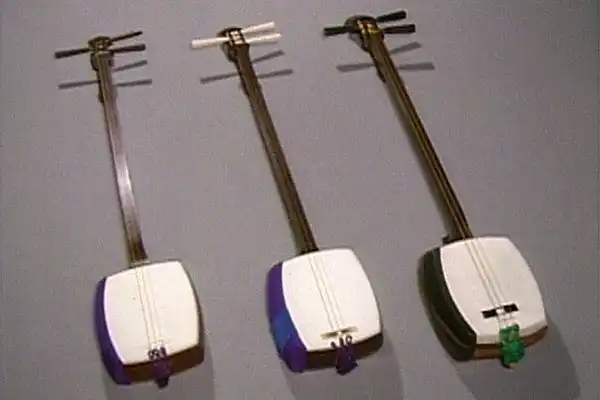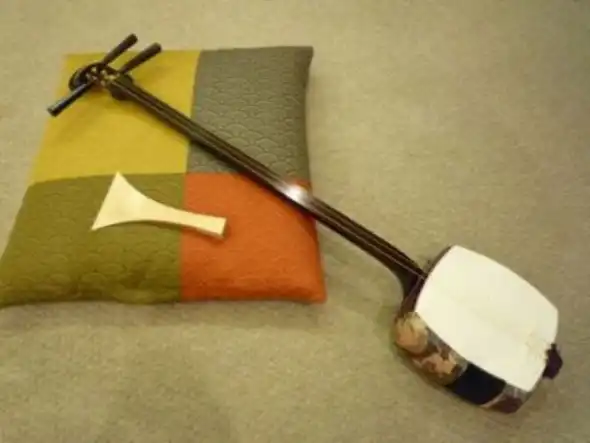The shamisen 三味線 (also known as sangen or samisen) is a three-stringed traditional Japanese instrument derived from the Chinese sanxian. There are several different types of shamisen each designed to suit a particular style, from accompanying kabuki theatre to puppet plays to traditional folk songs.

There are three main sizes of shamisen, designated according to the thickness of the neck (hosozao, or thin neck; chuuzao, or medium neck and futozao, or thick neck), and many different performance styles. Each style is commonly associated with a particular neck size, but the styles don't necessarily require specific sizes. For example, nagauta style players usually use hosozao size (thin neck) shamisen, but they have also been made with surprisingly thick necks. Shamisen for tsugaru style are generally futozao size (thick neck), but the instruments are also sometimes made as hosozao (thin neck) to accommodate smaller-sized players.
